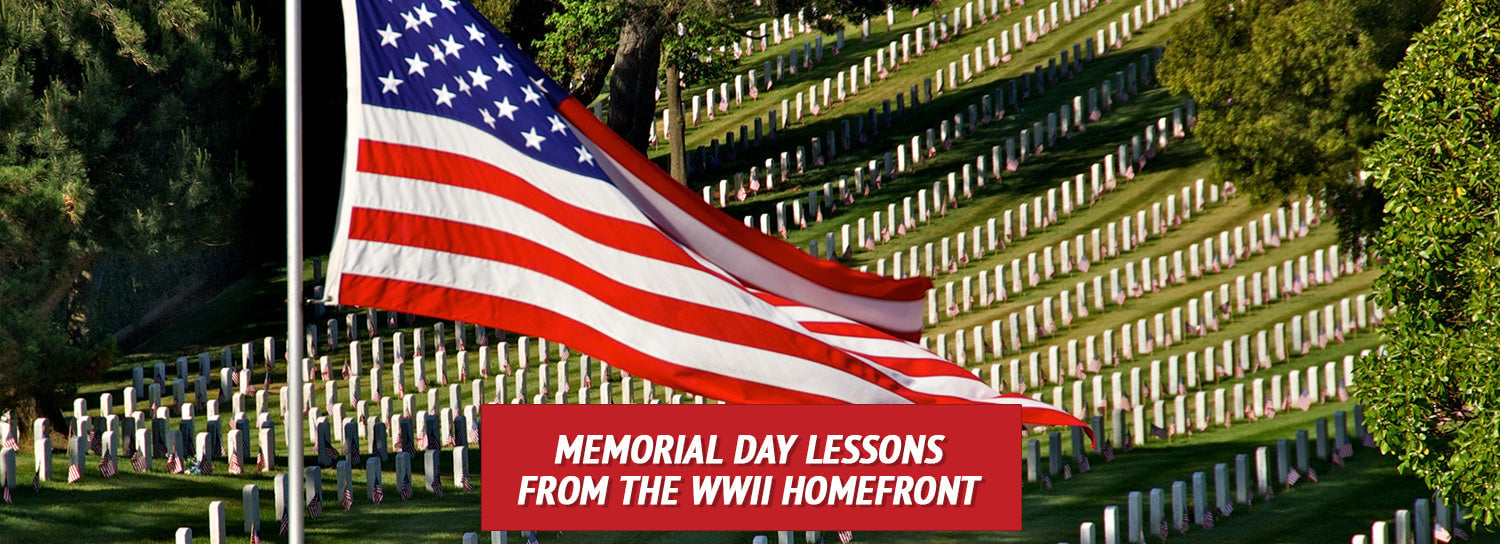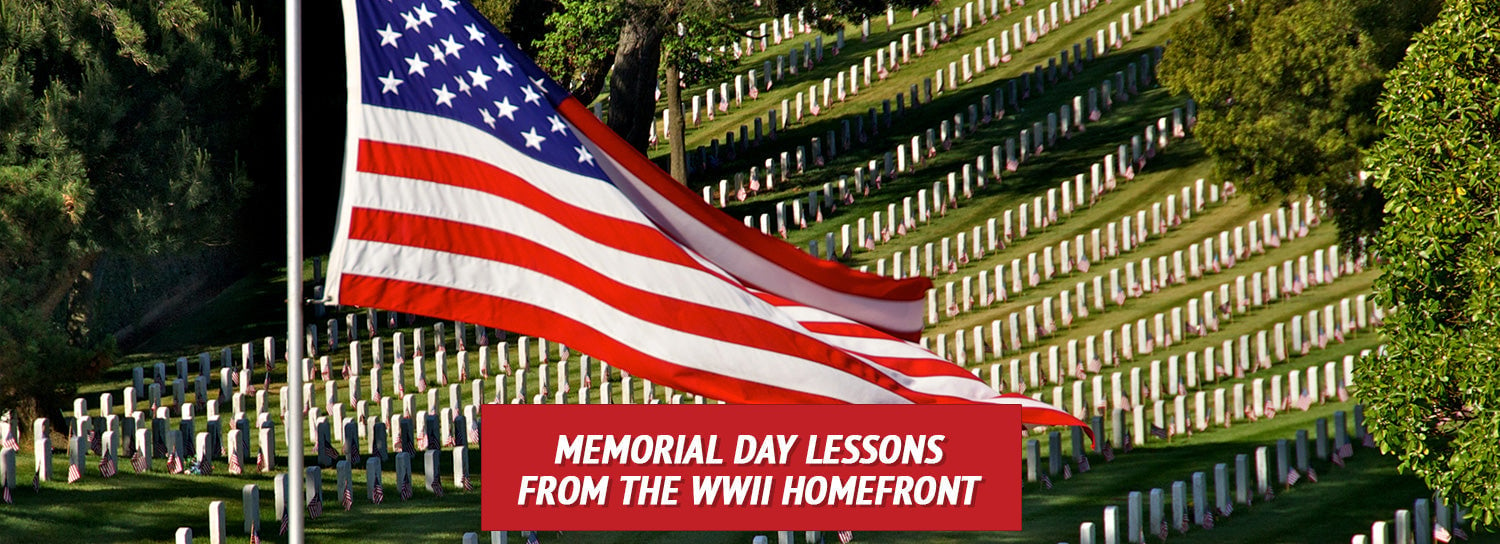
Memorial Day is a time to honor the brave men and women who made the ultimate sacrifice in service to our country.
But behind every soldier stood families and communities doing their part on the homefront – facing rationing, shortages, blackouts, and the fear of the unknown.
They didn’t just wait and hope…they acted.
They found ways to stretch what they had, grow what they needed, and support the war effort from their own backyards.
This spirit of resilience and resourcefulness is something every modern prepper can learn from.
Because when systems fail, it’s this mindset that gets you through.
Keep reading to discover how everyday Americans held the line during WWII and how you can apply their survival strategies today.
“Make Do” with What You Have
During WWI, Americans were encouraged to ration food, but during WWII, rationing was mandated.
Americans quickly learned to “make do” with what they had because even basic foods and ingredients were rationed.
Here is an example of a weekly ration for 1 adult during WWII:
- Bacon & Ham 4 oz
- Meat to the value of 1 shilling and sixpence (approximately 1 lb of meat)
- Butter 2 oz
- Cheese 2 oz
- Margarine 4 oz
- Cooking fat 4 oz
- Milk 3 pints
- Sugar 8 oz
- Preserves 1 lb every 2 months
- Tea 2 oz
- Eggs 1 fresh egg per week
- Sweets/Candy 12 oz every 4 weeks
Additionally, they received ration points to use toward tinned goods or imported goods.
They used these additional rations for things like cans of tinned fish or dried fruit.
“Making do” with rations was such an important idea that there were radio broadcasts that provided tips for how to make the best of the food they had.
Magazines and newspapers included recipes using rationed ingredients.
Plus, rations often included recipe suggestions.

Additionally, since they had limited ingredients, Americans had to make do by making substitutions.
While we hope to never experience wartime rationing, it is still wise to know how to make common substitutions.
See 13 Cooking Hacks When You’re Missing Ingredients.
Stretch Food
While rationing still took place, it was important to make sure people were getting key nutrients.
This is what led to many Americans learning how to stretch food.
For example, many people add rice or beans to dishes to feed more people.
Add the Ready Hour Beans Trio and Rice Kit to your emergency pantry to be prepared to stretch meals as needed.
That’s not the only way they found to stretch food.
Dried eggs and powdered milk made it possible to stretch the longevity of essential food products.
The ability to still get the nutritional value of milk and eggs when fresh wasn’t available made it possible to stay healthy.
Whole egg powder and powdered milk are must-have items for everyone’s emergency pantry.
Grow Victory Gardens
One of the major ways those on the home front helped during wartime was by growing produce.
According to the National WWII Museum, “Propaganda posters urged Americans to plant ‘victory gardens’ and can their own vegetables to help free up more factory-processed foods for use by the military.”
These homegrown gardens became known as victory gardens and were a way to show patriotism.
During WWII, victory gardens accounted for about 40 percent of all the vegetables consumed in the US.
Those with gardens were much more self-sufficient than those who relied solely on the government rations.
Do yourself a favor and have the Survival Seed Vault on hand to grow your own victory garden.
Water Preparedness
While water was not rationed during wartime, it was on people’s minds.
Propaganda posters encouraged Americans to conserve water with sayings such as:
“Your wartime duty! Don’t waste water. Do not use more water in the kitchen than is necessary.”
“War industry needs water. Protect Production. Use it wisely.”
Additionally, people were warned of possible attacks on water sources.
Europe saw attacks on dams, and public water sources were purposely polluted during the war.
And they knew an attack was possible on US soil.
While America’s water sources were relatively safe, people were mindful of where water came from and how it was being used.
You can protect your family from polluted water sources every day by investing in a case of emergency drinking water pouches.
Embrace the Barter System
During times of turmoil, such as the Great Depression and WWII, citizens turned to bartering for survival.
When food is hard to find or rationed, bartering is necessary.
If you have long-term emergency food stored, you can feed your family during emergencies and use it as a bartering tool in the future.
Remember those who died for us and those who held the line at home.
In liberty,
Elizabeth Anderson
Preparedness Advisor, My Patriot Supply








